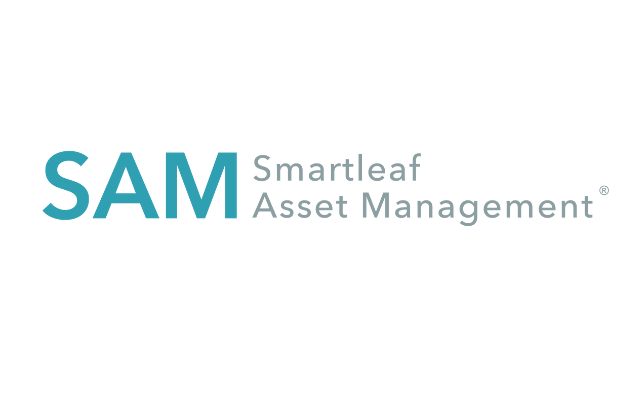e
We share the details of our simulation, and explain why direct indexes are more tax efficient than ETFs.

We ran a simulation to measure the loss harvesting tax efficiency of direct indexes compared to ETFs. The result: direct indexes were 3 to 5 times better (see appendix for details). Below, we explain why direct indexes are better at tax loss harvesting — and gains deferral, as well.
Loss harvesting
Let’s start with loss harvesting. Consider SPY, an ETF that tracks the S&P 500. When you buy or sell SPY, you’re basically buying or selling a basket of 500 stocks. SPY goes up or down in value in sync with the average value of the stocks in the S&P 500. You can only loss harvest SPY if this average value goes down from where you bought it. This is clumsy. In up markets, some of those 500 stocks likely went down, but you can’t loss harvest them – you can’t call up the SPY people and ask them to sell just those stocks that went down relative to your purchase date. And in down markets, some of the stocks likely went up, but you still effectively have to include them in your sale.
In contrast, with a direct index, you can just sell the individual stocks that go down. This means you’re likely to be able to loss harvest even in an up market. And in a down market, it means you can loss harvest more, since you can choose not to sell the winners. Only in the extreme case where every stock in the S&P 500 goes down or every stock goes up will SPY be as efficient in loss harvesting as a direct index.
It makes a big difference. In our simulations (see appendix for details), the direct index generated three times as much loss harvesting as an equivalent ETF with the same pre-tax returns. And in an up market, five times more.
Gains deferral
Tax loss harvesting is only part of tax management. The other (actually more important) part is gains deferral – holding onto appreciated securities while still controlling the risk characteristics of the portfolio as a whole.
The explanation of why direct indexes are better than ETFs for gains deferral is similar to why direct indexes are better than ETFs for loss harvesting – only in reverse. Instead of trying to sell securities at a loss, we’re trying not to sell securities at a gain. And direct indexes make this easier. Suppose, for example, you need to sell some of your appreciated US large cap holdings, either to withdraw cash or to rebalance the portfolio at an asset class level. If, as in our previous example, you own appreciated SPY, then any sale will result in realized capital gains. But if you own all 500 stocks in the S&P 500, it is likely that some went down (or at least appreciated little) even though, on average, their value appreciated. This lets you select sales that minimize or even entirely avoid realized gains.1
The tax superiority of direct indexes is not a new idea. What’s new is that the costs and the minimum account size for direct indexes have fallen dramatically, and direct indexes have become much easier to use. Driven by reduced (or zero) trading commissions, automated rebalancing analytics and (in some cases) fractional shares, we’re seeing minimums fall by roughly a factor of 100, from $250,000 to $2,000, while costs have fallen more than half, from 35 - 45 bps to around 15 bps. And in a well-implemented system (like, ahem, ours) working with direct indexes is as easy as working with an ETF.
Over a ten year period, index ETFs outperform something like 90% of investments.2 And direct indexes outperform index ETFs (on an expected after-tax basis).
Smartleaf Asset Management does more than manage direct indexes – we manage whole portfolios and every asset class, usually containing a mix of mutual funds, ETFs, and individual stocks. But direct indexing has been part of what our parent company, Smartleaf, Inc, has done since the day Smartleaf launched more than 20 years ago. Smartleaf’s system is now used to manage billions of dollars in direct indexes. And with collapsing minimums, falling prices, and equal ease-of-use, we very much expect this number to increase rapidly.
Appendix
To generate estimates of the relative loss harvesting efficiency of direct indexes vs comparable ETFs, we created a simple model that compared the loss harvesting of a simulated portfolio of 100 stocks and a simulated ETF that contained the same 100 stocks. For the purposes of the test we used synthetic (i.e. generated) prices and implemented a simple approach to loss harvesting.
Specifically, for loss harvesting, we assumed zero transaction costs; we ignored wash sales; and we implemented a simple strategy of loss harvesting at 90% of cost basis, if and when this threshold was crossed at any point in the one-year test period. (Note that Smartleaf’s actual loss harvesting algorithm is substantially more complex. It considers each investor's tax rates, the volatility of the individual security, time-to-long (for short term positions), time-to-year-end, and the quality of available substitutes. It also prevents wash sales.)
For market returns, we modeled individual equity and equity ETF daily security movement as a lognormal random walk (that is, percentage movement up and down was assumed to have a normal distribution), with a set expected return and standard deviation (larger for the equities than the ETF). Correlation of returns for the individual equities were modeled using a five-factor risk model.
We modeled daily returns for one year. We performed multiple tests with six different sets of assumptions of security returns and standard deviation:
- Simulated equity security. A mean annual return of a -6.3%, -0.8%, + 9.6% representing, respectively, a down, flat and up market. The volatility of each security was modeled separately with an average volatility of 23%, 27% and 29% in the down, flat and up markets, respectively (these figures correspond to individual large cap securities in the 2018, 2015 and 2016 markets).
- Simulated equity ETF. The same mean annual returns (-6.3%, -0.8%, + 9.6%), but with annual volatility of 17%, 16% and 13% (these figures correspond to a broad large-cap ETF in the 2018, 2015 and 2016 markets).
The specific ratio of loss harvesting for direct indexes vs ETFs was:
- In the up market (+9.6%): 5.6X
- In the down market (-6.3%): 3.6X
The results achieved in our simulations do not guarantee future results in any actual account. Specific results will vary depending on the actual holdings in the investor’s account, the investor’s tax rate, market movements, transaction costs, fees and other factors.
1. It’s a bit more complicated than this, since you want to maintain the risk characteristics of the portfolio, so you can’t simply sell the least appreciated securities – you need to consider the risk impact, as well.




